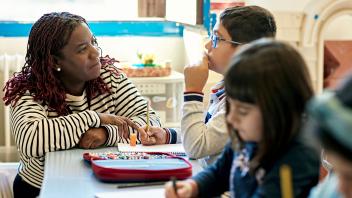A simple answer is that students in the elementary grades vary greatly, and if teachers want to maximize their students’ individual potential, they will have to attend to the differences.
There is ample evidence that students are more successful in school and find it more satisfying if they are taught in ways that are responsive to their readiness levels (e.g., Vygotsky, 1986), interests (e.g., Csikszentmihalyi, 1997) and learning profiles (e.g., Sternberg, Torff, & Grigorenko, 1998).
Another reason for differentiating instruction relates to teacher professionalism. Expert teachers are attentive to students’ varied learning needs (Danielson, 1996); to differentiate instruction, then, is to become a more competent, creative, and professional educator.
There is no recipe for differentiation. Rather, it is a way of thinking about teaching and learning that values the individual and can be translated into classroom practice in many ways. Still, the following broad principles and characteristics are useful in establishing a defensible differentiated classroom:
- Assessment is ongoing and tightly linked to instruction.
Teachers are hunters and gatherers of information about their students and how those students are learning at a given point. Whatever the teachers can glean about student readiness, interest, and learning helps the teachers plan next steps in instruction.
- Teachers work hard to ensure “respectful activities” for all students.
Each student’s work should be equally interesting, equally appealing, and equally focused on essential understandings and skills. There should not be a group of students that frequently does “dull drill” and another that generally does “fluff.” Rather, everyone is continually working with tasks that students and teachers perceive to be worthwhile and valuable.
- Flexible grouping is a hallmark of the class.
Teachers plan extended periods of instruction so that all students work with a variety of peers over a period of days. Sometimes students work with like-readiness peers, sometimes with mixed-readiness groups, sometimes with students who have similar interests, sometimes with students who have different interests, sometimes with peers who learn as they do, sometimes randomly, and often with the class as a whole. In addition, teachers can assign students to work groups, and sometimes students will select their own work groups. Flexible grouping allows students to see themselves in a variety of contexts and aids the teacher in “auditioning” students in different settings and with different kinds of work (Tomlinson, 1995, 1999).
